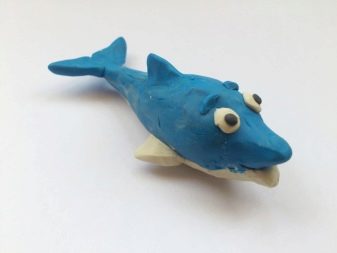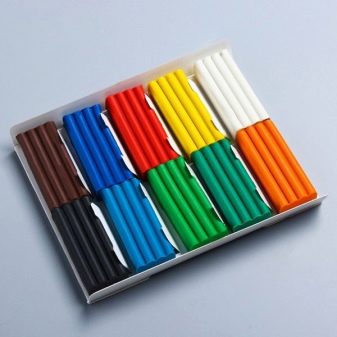How to mold a dolphin from plasticine?

The underwater world attracts people of all ages, children are no exception. Their numerous plasticine collections include terrestrial animals, as well as birds and inhabitants of the deep sea. The dolphin evokes only positive emotions and is associated in many children with the characters from the cartoons "Nemo", "Madagascar" and "Dolphin - the story of a dreamer."
It will take a minimum of time and effort to sculpt a dolphin, and descriptions from the article will help in the process.






Simple option
Children love to experiment and often mold dolphins with their own hands from all sorts of shades of plasticine. But let's dwell on a common option - we blind a blue dolphin with a white tummy. Due to the eyebrows, it will turn out to be incredibly cute.
To sculpt a dolphin step by step you will need:
- plasticine of several colors: white, blue, black;
- plastic knife;
- good mood.


Let's consider the stages of work in more detail.
- We form the body of the dolphin from the blue material. First, you can knead the ball in your hands, and when the plasticine becomes pliable, pull out one end (in the shape of a fin). Closer to the head, the body should be wider, in addition, you need to create a muzzle. Let's form a nose on it.
- In order to make the abdomen, we stick white plasticine to the tummy, pulling one end forward, thereby forming a pointed muzzle.
- For the tail, we blind 2 fins in the form of triangles and flatten them.
- We attach the fin to the body with a sharper end.
- On the back we depict a fin in the form of a beveled triangle.
- Now let's take care of the eyes. We take two rolled white balls, flatten them and attach them to the muzzle.
- We attach black pupils on top.
- We take 2 thin small blue sausages and make eyebrows out of them for the dolphin.
- We make 2 small triangles from white plasticine and connect with the white body of the dolphin on both sides closer to the muzzle.
- The representative of the underwater kingdom is ready!



How to make a dolphin on a wave
To create a dolphin on a wave, you do not need any specific skills, the main thing is that the wave is solid and keeps well on the surface.
To sculpt a dolphin on a wave you will need:
- plasticine: white, blue, gray, black;
- plastic knife.


Let's consider the process of work in stages.
- First of all, we create an oblong shape from blue plasticine: one edge should be sharper, the other wider.
- We form the muzzle.
- Form the abdomen of the animal from white plasticine and flatten it to the body. To get a smooth line, the edges need to be smoothed with your fingers.
- We make the eyes from white and black plasticine. Flatten white and stick to the face, and miniature black dots on top.
- We fix a blue fin on the back, and white ones on the sides - in the form of triangles.
- We will also attach a fin to the tail. To do this, flatten 2 triangles, connect them together and attach them to the tail. In order to keep all the details even, remember to use a stack.
- You can go further and mold a wave for the dolphin and fix it in a jump.
- For the wave you need 2 colors: blue and white. Knead the blue into a cake, and then bend it. Thus, we get a comb.
- A comb can be distinguished with white plasticine.
- A textured wave will turn out if you run a toothpick over it.
- The only thing left is to fix the dolphin on the wave.
Note! For effect, the craft can be beautifully decorated. For this, starfish are suitable. Roll the orange plasticine into balls and then flatten them. It will remain to cut out the rays along the edges.



Sculpting tips
Parents always try to turn any joint activity with children into an interesting activity for children. If modeling is planned with preschoolers (2-3 years old), then several rules should be taken into account:
- the material should be elastic and easy to knead;
- the first crafts should be extremely simple,
- the mass should not contain toxic substances;
- the child needs help (the child can sculpt simple shapes, and the parent is more complicated).
When creating animals or characters, you can accompany the sculpting with interesting stories. This will make your child's activities more interesting. Parents should remember that the purpose of sculpting with a child is not an ideal craft as a result. It is important to teach the child how to handle plasticine, namely, knead it, pinch and flatten it.
Modeling with a child is always an exciting activity, and most importantly, in the process, the child develops fine motor skills of the hands and forms abstract thinking.


For information on how to mold a dolphin from plasticine, see the next video.








